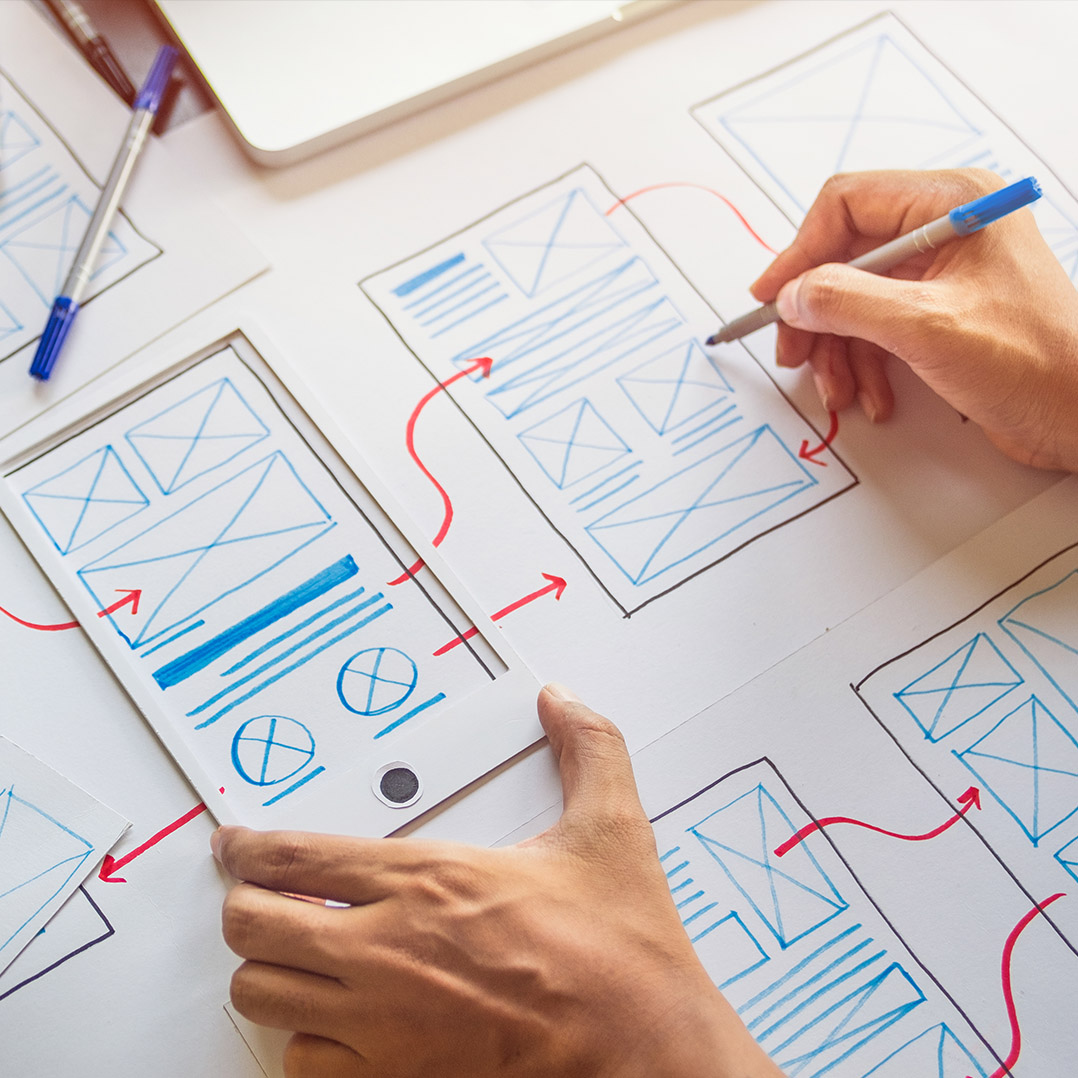With the proliferation of connected devices, UX becomes an even more important phase that occurs during the Medical Device industrial design process.
As a part of your medical device design process, User Experience tools help you to understand your customer’s existing ecosystem, and how your offering will disrupt that ecosystem.
Part of what Medical Device User experience design tools do is the optimization of the interaction between human and medical devices, and answer to hidden user’s needs.
The implementation of medical device UX processes creates great opportunities to create a successful medical device, providing insights as to where to focus your investment to have the most impact and bring the most value to your customer and your business.
Here are the main steps towards the creation of an optimized User Experience.
- Ecosystem Mapping
As a first step towards an optimized User Experience, a discovery session is performed. The current ecosystem for the product, including stakeholders, tools, technologies, and the flow of data and information is mapped out.
- Defining the User
From conception to prototyping, medical device design must consider all the people who will interact with the device. Each person who encounters the device has a “user experience.” Therefore, the many different roles and skills of the people who interact with the device factor into device design. This means expanding the design viewpoint for medical devices from only doctors, nurses, and patients to lab technicians, nurses’ assistants, cleaning and waste disposal staff, and everyone else who may encounter a device in the course of their role within the user universe. Once you have discovered who your general user groups are, you need to understand them from three different perspectives:
- User Skills: “How” they are ie: what is their domain knowledge, cognitive load and physical abilities;
- User tasks: “What” they are doing ie: what level of precision, efficiency, and effectiveness is required for them to achieve their goals;
- Use environment: “Where” they are ie: what is their physical and postural context, what micro-climate are they working within (both physical and social), and what is their organizational context (which can be within the work, social or familial context).
- Journey Mapping
The Journey Map defines the workflow, from the perspective of the person having the experience (patients, medical professionals). It illustrates: what a person “does” (activities and events); across time and place (context); with people and things (touchpoints).
WHY USER EXPERIENCE IS SO IMPORTANT IN MEDICAL DEVICE DESIGN?
Researching the medical device user experience (UX) provides a lot of valuable data that can save time and money. By addressing actual (rather than perceived) needs, device developers can design products that enhance usability and reduce the number of iterations necessary to produce a device that appeals to customers and users.
From a user’s perspective, such as healthcare professionals and patients, medical device UX is important because it means users can effectively reap the benefits of the medical device and it means less training time, more ease of use and satisfaction, optimal device use, fewer errors in use, more safety, and better outcomes.
In addition, users of medical products are more and more used to simple, intuitive, and task-focused products with an appealing look. They expect more and more of a medical product and they compare it with consumer products. No longer is it enough to provide only safety. What is desired, is a high-level experience focused on simplicity and a highly efficient workflow. This applies particularly to lower-risk devices from class 1 and 2 but also for class 3 devices.
From the Med-Tech companies’ perspective, UX makes their medical devices more effective with users and then more saleable. This reduces device complaints and product liability, and facilitates the regulatory approval process.
To sum-up, UX process creates added value as follows:
- Increased addressing of actual end-user needs rather than perceived requirements
- Real improvements in workflow leads to actual time saving (a huge factor for doctors)
- Reduced costs-risks during medical device development through reduced development time and avoiding costly improvements after the launch
- Competitive advantage through convincing design and an excellent user experience
- Increased acceptance, e.g., higher adoption rate of customers (the adoption is a key factor for success)
Currently, for many medical device companies, there is no direct business-need in creating a cool-looking and simple to use device. However, to be competitive in the years to come, UX and the focus on understanding users and putting them into the center of decisions will become even more important, especially for the products used in home-care which are used by consumers rather than trained medical staff.
At Creanova, our designers and engineers use their deep experience in the Healthcare field to improve the interactions between users and devices during every stage of the medical device industrial design process. We go beyond a safe medical device, to deliver successful medical devices which ensure positive experience and interaction with the user.
Creanova supports you during any stage of the medical device development. We optimize your budget and timeline and provide the best medical device design, UX and UI, leveraging 2 decades experience in the Med-Tech sector.
If you’re interested in our experience in designing medical devices, contact us.

